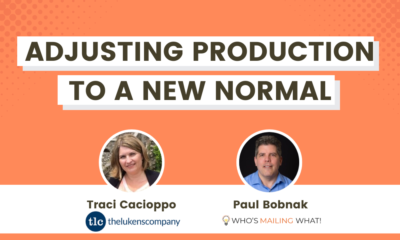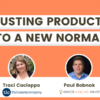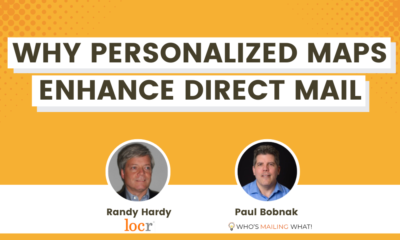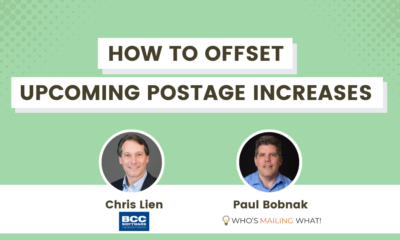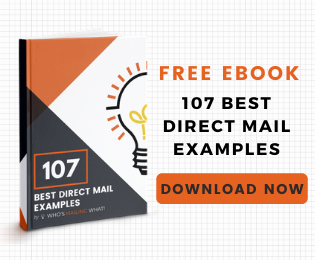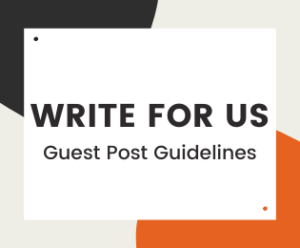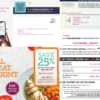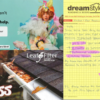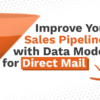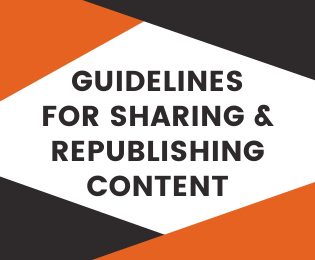MEET THE MAILERS
Meet the Mailers: Choosing Between Digital & Offset Printing
In this episode, we talked with Phoenix Group of Companies about choosing digital vs. offset, sustainability issues, and value of personalization.
In this episode, I talked with Dean Baker, CEO of the Phoenix Group of Companies, a single-source provider of print solutions from concept to completion.
We began by talking about his career in direct mail and print. His early work with helping non-profit groups raise funds sparked his interest when he saw the power of marketing to attract donors.
I love the math of it and the trackability of it … the effectiveness of direct mail.
 Dean BakerCEO
Dean BakerCEO
The Phoenix Group of Companies
With five companies under the Phoenix Group umbrella, Baker oversees operations, planning, and sales for a wide range of activities.
Among the topics we covered:
- Choosing digital vs. offset
- Sustainability issues
- How to control costs
- Value of personalization
- Trends in direct mail marketing
Here are some questions and answers (edited for clarity and space):
- What types of questions should marketers consider when choosing between digital vs. offset printing?
That’s really a good question. And it’s one that I’ve asked often times. And it’s one that we even ask ourselves at times – should this project be produced conventionally or should it be done digitally? And I guess the advice I would give is, first, begin with a print provider who can do either, so that takes some of the guesswork out of it for you because then they’re gonna offer the solution that’s best based on the attributes of the package or the campaign rather than simply choosing which one they happen to have.
But there are some broad things I think that clearly define digital versus offset. And one of those is if you have a program that has variable full-color content, then clearly, that’s gonna have to be done in a digital application, either digital sheet or digital web-fed presses.
So that one’s clearly has to be done digitally. The other sort of rule of thumb at the opposite end of the spectrum, is that if you have something that has a lot of color imagery but it’s static, and it’s heavy in coverage, and the only variable content is black, then that’s probably better suited for an offset environment, because the digital inks are so expensive. When you get into pieces that have a lot of ink coverage, a lot of density of color and they’re static, in that situation, it’s likely to be less expensive to print shells in a roll to roll forms format and then go laser simplex or duplex offline.
So knowing the amount of color you’re gonna have in your piece and whether it’s static or variable is an important part of considering which of those applications to do. One of the things that I’m seeing as we’ve brought on digital web presses and digital sheet-fed presses and also have that offset and roll to roll forms capability is I’m seeing in those areas where even when it’s static color and black and white variable if it’s lighter ink coverage we’re seeing more clients even going to a digital application.
Because they don’t have to pre-print shells and try to guess what they’re going to need when they finally finish their list sorts, do their data processing. So they can print both the static content and the variable content at the same time. And the cost will be very close.
Sometimes the saving, there may be a little bit of savings or it may be a few cents more, but you can get to market faster by doing it as a single process. So that’s kind of the guidelines I would use for it.
- One of the things I mentioned I saw on your company’s website is a lot of talking about sustainability, and talking broadly, how can print be sustainable today?
You know, it seems like this sustainability discussion comes in ebbs and flows. And in the last few years, I think the interest has waned in sustainability, but is now coming back, and we’re having more of those conversations.
And I think one thing that’s important to keep in mind is that many of the raw materials and the processes used in printing, in direct mail, it all begins with paper, and paper is a renewable resource, it comes from trees. And it’s absolutely fascinating. I don’t think a lot of people realize that there are actually more trees in America today than there were a hundred years ago. I mean, here on the East Coast alone, there’s twice as many trees in existence as there were 70 years ago.
And of course, trees soak up carbon, so they’re really good for the environment and let’s face it, we wouldn’t be growing all these trees if we weren’t using wood and paper products. So from that standpoint, print and direct mail is not only using renewable resources, but itself is recyclable. So that direct mail stuff, when you’re done with it, throw it in your recycle bin, not in the trash bag.
And printers and letter shops have gotten really good about recycling, ink and plates and paper, of course, even solvents. Some printers are using vegetable-based inks. And the newest inkjet digital web that we’ve just installed last month is all aqueous-based inks, no VOCs, again very good for the environment. So I think there’s a lot of ways to look at how we can make print and direct mail sustainable.
The last one I would throw out, and we’ve done this for some clients who are very environmentally conscious or their patrons are, and that is we’ve printed stuff using wind-generated electricity, so we’ll calculate how much electricity will be required to produce your piece, and then go out on the open market and buy renewable energy credits or energy that was created by wind or solar.
And you can actually calculate what your carbon footprint savings was as a result of that decision and put a little statement, perhaps on your letter package. So that’s kind of a neat extra thing to do to demonstrate how your company is sustainably producing its direct mail.
- Paper costs and supply chain issues have put a lot of pressure on marketers to save money on producing their direct mail. What are some good ways from your point of view for them to keep costs under control?
That is a huge issue here in the last six months. I mean, and even to the point of let’s say cost out of the equation for a minute – can you get the paper? Just that little, I think major mailers who have simply had to change their cadence of mail because of not being able to get the paper required at any price.
I think the best advice I can give people is to plan ahead, to work with your printer and plan ahead, try to look out at least two months or three months. We’re doing more forecasting with our clients to look at what their projections are. That helps us or your printer, giving them time to source the paper. And they may have to source it from multiple sources. So that’s certainly one thing that can help.
The other piece of advice I would give is to be flexible. You know, you may have had your designer specify that insert should be on, you know, a hundred-pound satin text of a specific brand. And I’m having more and more clients say, “I don’t care, a hundred pound satin, matte, gloss, whatever you can right at this point”. And the same is true with even just your letters or forms: You might have traditionally done something on a 60-pound offset, well, maybe we can get 70-pound offset for you for this next mailing and 60 after that.
So that kind of flexibility I think is really important. I think we are gonna see some easing of the paper constraints. As we go into the third and fourth quarter I think that’s going to ease up a little compared to what we’ve seen in the past six months.
With the UPM mills from Finland and Germany coming back online, we’re still not gonna be in a balanced market where supply and demand are equal. But I think there’ll be less in balance than what we’ve seen in the last six months.
- Marketers and brands today know the value of personalization and direct mail. What types of steps should they take to get the most out of personalizing their mail?
That’s an interesting question. And even just yesterday, I was talking to a client that was here at our facility working with us on a project. And he was telling me about his company that has a tremendous amount of data about their customers. This was a travel company, so to speak in the travel industry. And he said, “We know where our customers travel, when they travel, who they travel with, how frequently they travel. We’ve got tons of data around this. We also have now the capability to produce highly variable pieces with versioned imaging, doing a lot of personalized pictures or content”. He said that their challenges, with the marketing team and others, is to build this library of images that could drive this content.
Where I would suggest we start, where our clients start and many of them are doing this already is to begin to segment their database, their customers and prospects, and begin to break them down into groups of buying preferences, lifestyle preferences, age or motivation for buying your product or service. So begin to segment those. And then use a combination of versioning. In other words, create perhaps a specific offer, graphics, or imagery for each of those subgroups.
And then fill that in with text and variable content there. So using a combination of versioning and personalization, I think it can create some really compelling messaging, and I’m seeing a lot more versioning being done by our clients testing various offers. Some of these campaigns may have as many as 70 different versions. And with digital output, it doesn’t matter, every piece could be different. But that’s a good way to start with segmentation, versioning, and then personalization.
- What types of trends do you see unfolding in direct mail in the rest of the year and going into 2023?
I’m seeing a lot of versioning. So testing multiple offers, specific offers to different segments of a customer or prospect database, so that I’m seeing a lot of. I’m seeing increased usage of full color on letters and outer envelopes to get your attention more.
Phone cards, these fake credit card devices that are sometimes used for gimmicks for a membership or a discount or something that are really actually printed paper are really hot the last two years. And oversized postcards and what I call postcard flats, which is a single heavy stock piece that’s maybe anywhere from 6×10-3/4 up to a full flat size seem to be pulling rather well for marketers.
You asked about trigger campaigns. We do a really good job with that in our Philadelphia mail link facility. And that may be where mail is used in combination with another marketing channel, maybe it’s a TV ad, and then you’re encouraged to call in to get more information and that may then trigger a direct mail package going out to you.
Some of our healthcare providers use programs like that or marketing medical device or pharmaceutical companies, you may inquire about a disease state or condition that you’re having that then triggers information.
And so we’ve got a lot of those set up in different industries, different verticals where we’ll take a daily feed from our client inquiries that have come through another channel (TV, email or website), and then print out specific personalized content along with maybe some static content that might be information about that medical condition or whatever.
And then that gets mailed out, and that’s a steady stream of follow up. And of course, that combination of multi-channel marketing is very effective. And the new digital web that I was telling you about that we just installed can print on both glossy coated paper as well as uncoated paper.
And so now we’re getting variable content on really nice looking sheets of paper, and printing it like 50,000 pages an hour. So, you know, this is really allowing us to take those highly personalized programs and scale them up to much larger volumes than what would’ve been possible in the past.
Here is our conversation. We’ve added timecodes for your convenience.
Thanks again, Dean, for an interesting and informative chat! To learn more about the Phoenix Group of Companies, visit PhoenixLitho.com.
Your comments and ideas are very important to us in making your Who’s Mailing What! experience even better for you. Through these engaging and helpful talks, we hope you’ll take away practical tips, insights, and stories to inspire and build your own success.
If you have any feedback — or are interested in sharing your expertise and viewpoint with our wide and diverse audience on “Meet the Mailers” — please reach out to me. I’d love to hear from you!









